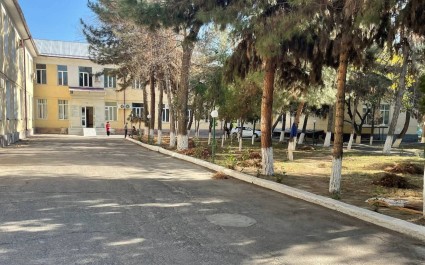The European Bank for Reconstruction and Development (EBRD) is expecting Central Asian economies of Kazakhstan, Kyrgyz Republic, Mongolia, Tajikistan, Turkmenistan and Uzbekistan to grow by at least 5.2 per cent on average in 2023, according to its latest Regional Economic Prospects report, published today.
The region is expected to continue growing by around 5.4 per cent in 2024 thanks to the relocation of businesses and individuals from Russia, improvements in governance, increased commodity exports, and the reopening of China.
Central Asian economies have proven resilient to adverse geopolitical headwinds related to Russia’s war on Ukraine. Most economies in the region have strengthened their trade cooperation with Russia, serving as intermediaries and supplying their own products into the vacuum created by the withdrawal of international firms from the Russian market. The volume of money transfers to Central Asia from abroad has significantly increased, boosting bank deposits and profits. The relocation of Russian firms and individuals has strengthened demand in the retail, real estate, and hospitality sectors.
Meanwhile, labour remittances have also increased, fuelled by the sustained labour demand in Russia and a stronger rouble. In the first quarter of 2023, growth continued across the region, while consumer price inflation in most economies was still far above the target ranges set by central banks. The region’s economies are likely to continue growing rapidly in the short term, but the uncertainty over global trends in interest rates, inflation and commodity prices remains.
Kazakhstan’s economy is benefiting from the relocation of foreign firms, investment in new activities related to the exit of major global players from Russia and ongoing efforts to diversify transport and oil transit routes. Planned reforms to improve the country’s business climate, lower market entry barriers and reduce the footprint of politically exposed persons in the economy may promote foreign direct investment and the development of small and medium-sized enterprises in the medium term. Downside risks include persisting inflationary pressures and uncertainty surrounding oil and commodity prices. Overall, the economy is expected to expand by 3.9 per cent in 2023 and 4.2 per cent in 2024.
Russia’s demand for migrant workers, the relocation of Russian capital and highly qualified labour force to the Kyrgyz Republic and a major increase in intermediated trade are among the key factors which will fuel the country’s short-term growth. Improvements in tax administration are also contributing to that growth by reducing informality and expanding the tax base. Real gross domestic product (GDP) is expected to grow by 7.0 per cent in 2023 and by 7.2 per cent in 2024. Investment in major energy and infrastructure projects is likely to contribute to GDP growth in the medium term. Nevertheless, vulnerabilities related to the tightening of credit conditions and reliance on remittances from Russia remain.
Mongolia’s real GDP is set to grow by 7.2 per cent in 2023 and 7.5 per cent in 2024, supported by China’s re opening, the recovery of tourism and full production starting at the Oyu Tolgoi mine. Downside risks to the country’s growth relate to external developments such as the war on Ukraine further disrupting transportation and transit through Russia, a tightening of global credit conditions, and uncertainty surrounding commodity prices and China’s demand for exports from Mongolia.
Tajikistan’s economy has proven extremely resilient to supply chain disruption unleashed by Russia’s war on Ukraine. GDP growth is expected to reach 7.5 per cent in both 2023 and 2024, on the back of relatively low inflation, Russia’s demand for labour from Tajikistan, China’s reopening and the development of power and transport infrastructure. Downside risks are linked to a worsening of external conditions related to the situation in Afghanistan and Russia’s war on Ukraine, as well as infrastructure bottlenecks that are hampering trade.
In 2022, the economy of Uzbekistan posted broad-based growth of 5.7 per cent, reflecting a significant improvement in external and domestic demand conditions, including a more than doubling of remittances. The economy is projected to grow by 6.5 per cent in both 2023 and 2024, driven by inflows of foreign investment, companies and individuals, well-managed privatisations and business climate reforms. Though relatively diversified, the economy could be hampered by a further escalation of Russia’s war on Ukraine and moderation of inflows of remittances.














